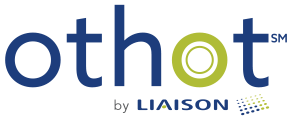Fred’s Five Predictions for Higher Education in 2021

Fred Weiss
Those of you who know me personally or follow me on social know that I have worked in the higher ed and EdTech industries for 30 + years and that I am an avid reader and trend watcher.
And as the President and CEO of a higher ed-focused advanced analytics company, which is in the business of predictions, it is only appropriate that I share some predictions for 2021.
Here are my five predictions for higher ed in 2021 (and questions you should be asking):
1. COVID-19 will augment the effects of the future decline in high school graduates.
When Dr. Nathan Grawe spoke at our 2020 annual customer event - the Virtual Partner Experience - the one thing he said that stuck in my head was, “Where are the babies?”
Birth rates began to decline in 2008 because of the Great Recession. As a result, there will be fewer high school graduates starting in 2025.
COVID-19 threw a wrench in that data. In November 2020, Common App saw eight percent fewer first-year applications, and first-gen students’ applications are down 16 percent.
While the number of high school graduates is not forecasted to decline until 2025, we already got a sneak peek this fall at what can happen to enrollment.
How is your institution preparing?
For the last few months, Patty Beeson, Othot’s Director of Research, and Andy Hannah, Othot’s Chairman and Chief Partnership Officer, have been working on a project using the demographic data from Nathan Grawe and the Western Interstate Commission for Higher Education (WICHE) Report to gauge the future impact on higher ed institutions, with more granularity available for our customers.
More on that in February – hint, it is a report that you’ll want for your institution (click here to make sure you get a copy of it).
2. Test-optional admissions will continue to challenge the traditional approach to admissions and merit aid.
According to Fairtest.org, in September 2019, 1,050 colleges had implemented a test-optional policy. A year later, more than 1,570 colleges are test optional.
What a difference a pandemic makes.
While the debate continues if test-optional is a fad or a fundamental change to higher ed, test-optional admissions are here to stay, at least for a while. It is prompting institutions to rethink their admissions and merit aid processes.
For this and other reasons, I think more colleges and universities will use data and advanced analytics to rethink their admissions and merit aid processes in 2021. We’re already working with several institutions on different analytics approaches to test-optional admissions and test-optional merit aid.
How is your institution, whether already test-optional or actively contemplating it, evaluating applications and merit aid?
3. Student Success IS more important than ever in 2021.
Student retention is already important, especially for those states where public funding is outcomes-based.
But why is student retention even more important in 2021?
When you look at the demographic data, test-optional admissions, and the impact of COVID-19 on higher ed, student retention rises to the top of the priority list. Colleges and universities are trying to figure out how to enroll the best-fit students for their institutions, create pathways to graduation, and develop engaging programs to keep students enrolled.
COVID-19 has placed many stresses on students, their families, and institutions. Some students have had to postpone their education or drop out because of financial and/or personal health reasons. The number of students in the applicant pool and on campuses has decreased, putting a spotlight on student success.
Your enrollment strategy must include solutions for retention (and persistence).
How can you keep students enrolled? How can you recruit students that will stay and graduate?
I think we’ll see more institutions look to data and advanced analytics to understand retention strategy effectiveness. It is so important that campus-wide initiatives, backed by data, will be the norm. And by better engaging with students today, you positively impact their likelihood to be engaged as alumni.
4. There will be more focus on transfer students, both from an offensive and defensive strategy.
Remember the National Association for College Admission Counseling (NACAC) Code of Ethics and Professional Practices (CEPP) changes from September 2019? While this created a huge stir when first announced, it kinda got lost amidst all the challenges of the pandemic.
Now, colleges and universities can:
- Offer incentives, like larger financial aid packages or priority housing, to applicants who applied under the early decision program.
- Recruit a student even if they have enrolled, deposited, or otherwise declared their intent to enroll elsewhere
- Convince previous applicants or prospects to transfer to their school without the student first inquiring about transferring
The 2019-2020 recruitment year was made even more complicated by the pandemic. As campuses closed, students shifted to online classes were dissatisfied by the experience. Some postponed admissions decisions and others looked for more cost-effective and/or closer to home options because of changing finances and health issues.
So, we can expect that some students will change their minds on their college decisions as the pandemic slowly fades into history.
For those reasons, I think 2021 will be open season for transfer students. Transfer students are an opportunity to increase or sustain enrollment, AND transfers can expose cracks in your student success efforts.
Colleges need to expand their playbook to accommodate both the offensive and defensive positions to attract transfers in and avoid transfers out. It is in these complicated situations that data and advanced analytics can provide a path.
Advanced analytics can be used to predict the likelihood of these behaviors and rewrite the playbook.
How will you attract students AND/OR prevent them from leaving?
Between transfers and retention, if you are the CFO, another way to look at this is, “how do you protect existing revenue rather than having to find a means to replace it?”
5. There will be increased competition for philanthropic dollars and an increased risk of donor fatigue.
According to CASE’s Voluntary Support of Education report, published earlier this year, giving to higher education increased year-over-year by 6.1%; while it was the tenth consecutive year of growth, the pace of growth slowed; further, total giving reflected in that report included a significant contribution to Johns Hopkins University from Michael Bloomberg; if that gift were excluded from the totals, year-over-year giving would have barely kept pace with inflation.
Amidst the pandemic and what is widely perceived as economic collapse, this could be challenging times for philanthropic support of higher education; there is increased competition for the philanthropic dollar, unemployment is high, and there are competing perspectives on what might happen as we move into 2021.
One firm’s survey said that only 58% of donors plan to give the same amount as last year, while 23% say they are going to give less.
Another firm’s survey says that college fundraisers are growing more confident in their expected outcomes.
Confusing? Yup!
Alumni engagement continues to be a hot topic. In 2021, finding broader and deeper ways to engage across all vectors – philanthropically, experientially, through volunteerism, and through communications – will become more important. More institutions will adopt advanced analytics to drive engagement with their constituents by – amongst other things - identifying which individuals are most likely to donate, helping you ensure effective outreach and achieve your fundraising goals. At some level, this is about “future-proofing” with data-influenced decision-making.
What are your plans to increase donor acquisition and retention? How do you plan to upgrade donors in 2021?
Look backward to look forward
2021 is likely the most anticipated year in modern history. Despite the many challenges of 2020, students, their families, and higher ed may all come out of this year a little stronger.
That's been the case with our partner institutions.
I am pleased to report that – when it comes to year-over-year enrollment - our partner institutions outperformed other higher ed institutions for undergraduate first-year full-time 2020 enrollment.
The national average decline for freshmen, according to the National Student Clearinghouse, was 13 percent. Othot’s partner institutions had a drop of 4.74 percent, which is three times better than the national average.
Still a drop, but most institutions would be giddy to know they were that far ahead of the national average.
The difference: our partner institutions used data and advanced analytics to make decisions about their enrollment strategies.
Don’t just take my word for it. The joint statement made by the Association for Institutional Research, Educause, and NACAC concurs that “Analytics Can Save Higher Education. Really."
What do you think will happen in 2021? Send me a note at fredweiss@othot.com.

Fred Weiss



